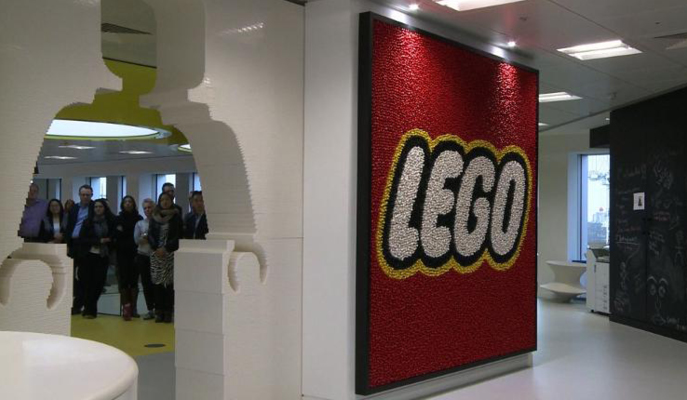Blog
Lego, and the physical properties of corporate culture

We’ve recently revisited a fascinating interview from 2010 with Jørgen Vig Knudstorp, CEO of Lego Group, that demonstrates the value of building business strategy around purpose – and making sure that this is brought to life in your company culture.
Knudstorp was tasked with putting the 76 year-old Danish company back on a firm financial footing after losing its way. He started with basic questions of business strategy. Knudstorp saw that Lego’s many ‘adjacencies’ – myriad projects outside of the main product - were drains on its ‘culture and capabilities’.
To move forward, Lego had to rediscover its core purpose. Speaking to Harvard Business Review, Knudstorp explained:
Once the company had gained the freedom to live and have a strategy, the management team set out to optimize the firm’s value. In order to do that, we had to ask, why does Lego Group exist?
By grappling with this central question of purpose, Knudstorp was able to re-focus the company’s vision around the little plastic bricks that made up the company’s heritage: “to focus on the strength of the brick and get out of things where we’re not world class.”

From purpose to culture
With this purpose-led business strategy in place, Knudstorp turned his attention to making it work across an organisation of over 8000 people.
We like to say at The House that values and behaviours are the same thing: ethics and values are all in the doing. Knudstorp takes a similar view, arguing that ideas and concepts alone are not enough to effect real change – in his view, the difference between good and bad leadership is whether ‘stuff’ actually gets done across the organisation.
Rather than prioritising thought and strategy over action, Lego had to ‘act…[its] way into a new way of thinking’ and physically carry out the changes it wanted to see in the business. Brick-by-brick problem solving is in the DNA of the product, and this had to be reflected in the everyday culture of the business.
For example, Knudstorp created a “visual factory” to track the performance of Lego’s production facilities. This was a simple whiteboard onto which factory managers would write performance numbers each Friday morning: green pen for good outcomes and red pen for bad outcomes.
At one point a manager asked Knudstorp when the numbers on the board were going to be inputted into an IT system. “Never!” came the response. For Knudstorp, sharing data in this physical way created a “social mechanism that starts driving change” – the physical act of writing the red number for all to see spurred the organisation to make the necessary changes.
This kinaesthetic approach gave Knudstorp’s “all about the doing” philosophy a tangible presence within Lego. Just as a Lego booklet illustrates the parts and movements needed to reach the end product, the problems and solutions were clearly and visibly outlined in a very physical way.
Different approaches will work for different enterprises, but it’s worth thinking about whether your organisation’s purpose and values are being brought to life by your everyday culture – including the physical stuff that surrounds you.